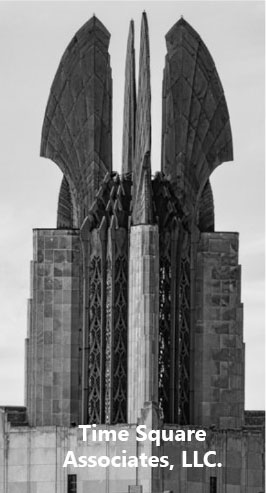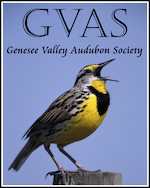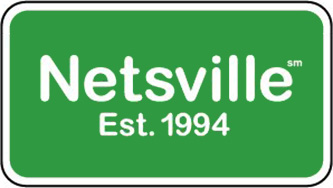Practicing The Falcon Watcher’s Craft
Believe it or not, falcon watching is serious business. Our volunteers make it look easy, but there’s a lot to think about when the binoculars and scopes, field guides and notebooks come out. In the city a watcher needs to keep in mind all the potential hazards of urban life, while still searching for a bird that may be hidden in a shadow, tucked into a building’s decorative cornice, or circling high overhead emerging into the brief stretches of blue sky framed by high-rise offices. Putting aside the challenges of a city, watching falcons begins as it does with watching any bird. The American Birding Association publishes its Birding Code of Ethics. Our local falcon watchers are expected to follow this code, but that’s only the beginning of their responsibility.
Because Peregrines are endangered in New York, observers need to take extra care to ensure that the falcons aren’t disturbed or otherwise stressed unnecessarily. To help keep everyone on the straight and narrow when it comes to watching the falcons, the New York State Dept. of Environmental Conservation has provided some advice that we’ve incorporated into our best practices.
Our first concern is always the welfare of the falcons we’re watching. As much as everyone would like to get up close and personal with a Peregrine (okay, maybe not everyone would like to!), the rule of the day is to watch without impacting the falcons. That means avoiding loud noises and keeping your distance. How close is too close? Well, the best advice is that if your presence causes the falcon to look at you, vocalize, or change its behavior, you’re too close. Despite our friendly intentions, a falcon sees us humans as potential threats. By looking at them we can increase that threat response.
Position is also important. It’s better to observe from below a falcon rather than above. Falcons and other birds of prey don’t like activity above them. You may recall that’s one of the reasons DEC didn’t place a nest box on the Four Seasons building; the proposed site for a box was below an office with lots of windows where the movement of people inside could have been seen by the falcons. Even better is to observe them from behind cover. If they can’t see you, the chance of unduly stressing them is minimized. New pairs can be especially sensitive to disturbance while establishing a new nesting area. Too much human activity can prevent them from settling down and successfully raising young.
Watching falcons or other protected species like eagles can actually have legal ramifications, as they are protected by both state and federal laws. In New York State, you should not get closer than 350 feet (about 100 meters) to an active eagle’s nest. There’s no set distance for falcons, but the guidance about not disturbing them is based on the NYS environmental law, which considers harassing a protected species to be the same as injuring or killing one. That’s serious business.
Watching in an urban environment brings its own set of challenges. Tall buildings may limit a watcher’s ability to see a falcon or follow its flight. Many times the falcons nest or perch on private property, so it’s important to get permission from the property owners before setting up shop with scopes, cameras, lounge chairs and cool drinks. One advantage of watching in the city is that you can often find cover. Watching from behind the corner of an adjacent building or even from a parked car can help to hide a watcher from the object of their attention.
When the fledglings begin to fly watchers in the city need to be aware of traffic on busy city streets in addition to all of the concerns we’ve already talked about. The personal safety of the watchers is important too. Watching in groups not only provides greater security, but it has other benefits as well. Members of the public often ask, “whatchalookinat?” It’s a great opportunity to educate the public about the Peregrines. Having multiple watchers means we can keep an eye on the falcons while explaining to passersby what’s going on. It also means there’s usually a pair of binoculars that can be lent, or a scope through which to get a good look at a perching falcon. Watching in a group also allows the watchers to cover a wider area. That’s important if a fledgling disappears and needs to be found. In those cases, 2-way radios and cell phones are useful tools to keep everyone up to date about what’s going on.
We don’t yet know what 2009 will bring in terms of fledging activity, but Rochester’s volunteer falcon watchers are already adapting to an environment that’s a lot different than the one they’ve been used to for the past decade. Gone are the open skies near Kodak and the High Falls gorge. Now it’s busy city streets and skyscrapers on every side. Adjusting to this new reality while keeping the falcons safe and not disturbing our new pair will be a challenge but our team of seasoned watchers is up to the task. With guidance from the DEC and our customary care for the Peregrines’ welfare, we’re confident that we’ll have another successful year of falcon watching here in Rochester.



June 9th, 2009 at 2:15 AM
Thank you for this information, so beautifully conveyed. Although I’m not a part of the official falcon watch group, but the birds are close to my neighborhood, and I try catch a glance of them when I can. Your essay is an important reminder, I think, that everyone who watches these wild birds can be a model for those who may not know much about interacting with nature, and those who don’t have the benefit of reading the kfalcon and rfalcon sites. Keep up the great work – huge thanks for all you do here at rfalconcam.com.
June 9th, 2009 at 2:49 AM
Thanks for the info. I have come down to Kodak/High Falls a few times to watch with all of you, and it really is quite an art! Question: if falcons see humans as threats, then why do like settling in urban areas so much?
June 9th, 2009 at 3:57 AM
@chicki – Availability of prey and suitable nest spots are the prime considerations. Being hundreds of feet up in the air away from people probably minimizes any threat we might appear to pose. It’s when the falcons come down closer that our actions may attract their attention. As we’ve seen many times in Rochester, falcons sometimes get as close as 20 or 30 feet from humans. You can argue whether a falcon that lands a dozen yards away from a watcher feels threatened or not, but the DEC’s biologists have decades of experience working with raptors in the wild. They’ve asked us to err on the side of caution and we’re taking their recommendations to heart.
June 9th, 2009 at 5:32 AM
Nicely said, Jess. Urban birding is still quite new to many of us and it’s really nothing like doing a birding hike in the woods. In the countryside you’re very aware you’re in their world, but the lines are quite blurred in an urban setting. Awareness of the basic rules can prevent a lot of misunderstandings as we learn how to best share our cities with these birds. May they always grace our city skies with their elegant presence.
June 9th, 2009 at 12:59 PM
@chrissy – I couldn’t have said it better myself!
June 9th, 2009 at 1:44 PM
Thanks Jess! I’m far away from Rochester, NY and so appreciate the reports from the Fledge Watchers/Falcon Watchers. They are pros at what they do and how they report and the actions taken to help the falcons when needed. The reports are done to professionally, I feel as if I’m there watching the action as it takes place. The pictures are a huge help also (the Kodak site has changed and I’m not sure how to be able to see those any longer). Thank you Flacon Watchers for reporting to the rest of the world what’s taking place in your great city!
June 9th, 2009 at 10:08 PM
Thank you so much for all the useful information. I never realized all that goes into it. Is it possible to find a location away from the city buildings, where they won’t have so many harmful things to avoid?In the middle of the city with all the business, its got be so stressful for the falcons to raise a family.Not everyone is kind to them, and away from all the concert and glass, they could have more open fields to raise their young.
I appreciate you letting us know all this info.
June 10th, 2009 at 12:53 AM
Out in the country they would still have cars and power lines to contend with and the great horned owl that preys on eyases – the one danger they generally do not have in the city.
June 10th, 2009 at 5:45 PM
Where are Cameras 1, 2 and 3 currently placed? Are they on the Times Square building and might we see Beauty and Archer on the website, or are those cameras and nest box somewhere else? I’ve forgotten!
June 10th, 2009 at 10:21 PM
Great article, Jess! That explains a lot. As I’ve said before, those of us not in the area are highly dependent upon the posted photos and reports to share this amazing nature…..especially with no webcam activity this season. I now have a better understanding of your effort to keep both sides in harmony.
June 11th, 2009 at 11:29 PM
@Ruth G-Cams 1, 2 & 3 are on the Powers Building. Cam 1 is currently pointing at the nest box on the Times Square Building-it’s on the ledge near the top center of the picture. The old main cam & cam 4 are on the Times Square building, but I seem to recall Jess saying earlier in the season that there were some technical issues (internet access etc.) that were holding up operation of those cams. Now that there’s something to see, I’m hoping they can get them up and running soon!